Experience Serenity at Feihong Pagoda: A Hidden Gem in Chinese Landscapes
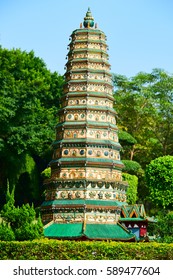
An Essential Guide to Visiting Feihong Pagoda
In This Guide
- An Essential Guide to Visiting Feihong Pagoda
- The Rich History and Legends of Feihong Pagoda
- Main Highlights: What You Absolutely Can’t Miss
- Planning Your Visit: A Practical Guide
- Tickets: Prices, Booking, and Tips
- How to Get There: A Complete Transportation Guide
- Local Cuisine and Accommodation Nearby
- Frequently Asked Questions
- Final Thoughts on Your Trip
Nestled within the ancient grounds of the Guangsheng Temple in Shanxi Province, the Feihong Pagoda (飞虹塔) stands as a breathtaking testament to China’s rich architectural heritage and spiritual history. This stunning structure, often regarded as one of the most exquisite glazed pagodas in the country, invites visitors to not only admire its aesthetic beauty but also to delve into the fascinating tales of its past.
Constructed during the Ming Dynasty, the Feihong Pagoda exhibits a unique blend of artistic flair and historical significance. Rising majestically to the sky, its intricate tile work and graceful lines have captured the imagination of travelers and scholars alike. For those familiar with Chinese culture, the pagoda holds additional significance as a filming location for the beloved 1986 television adaptation of “Journey to the West,” where it served as the backdrop for Tang Seng’s iconic encounters.
As you embark on your journey to this remarkable site, prepare to be enchanted by its serene surroundings and the profound sense of history that permeates the air. The Feihong Pagoda is more than just a visual delight; it is a portal into the spiritual and cultural essence of China, making it a must-visit for anyone eager to explore the depths of Chinese history and architecture.

Feihong Pagoda.
What to Expect
- Historical Significance: Learn about the pagoda’s origins and its role in Chinese folklore.
- Architectural Marvel: Marvel at the intricate designs and craftsmanship that define the pagoda’s structure.
- Cultural Insights: Gain a deeper understanding of the significance of pagodas in Chinese spirituality and architecture.
Visitor Information
- Opening Hours: Daily from 08:00 AM to 05:30 PM
- Admission Fee: Approximately 55 RMB per person
- Transportation: Accessible via taxi to the Guangsheng Temple Visitor Center; shuttle buses available for temple tours.
Prepare for an unforgettable experience as you step into the world of the Feihong Pagoda, where history, culture, and architecture converge beautifully.
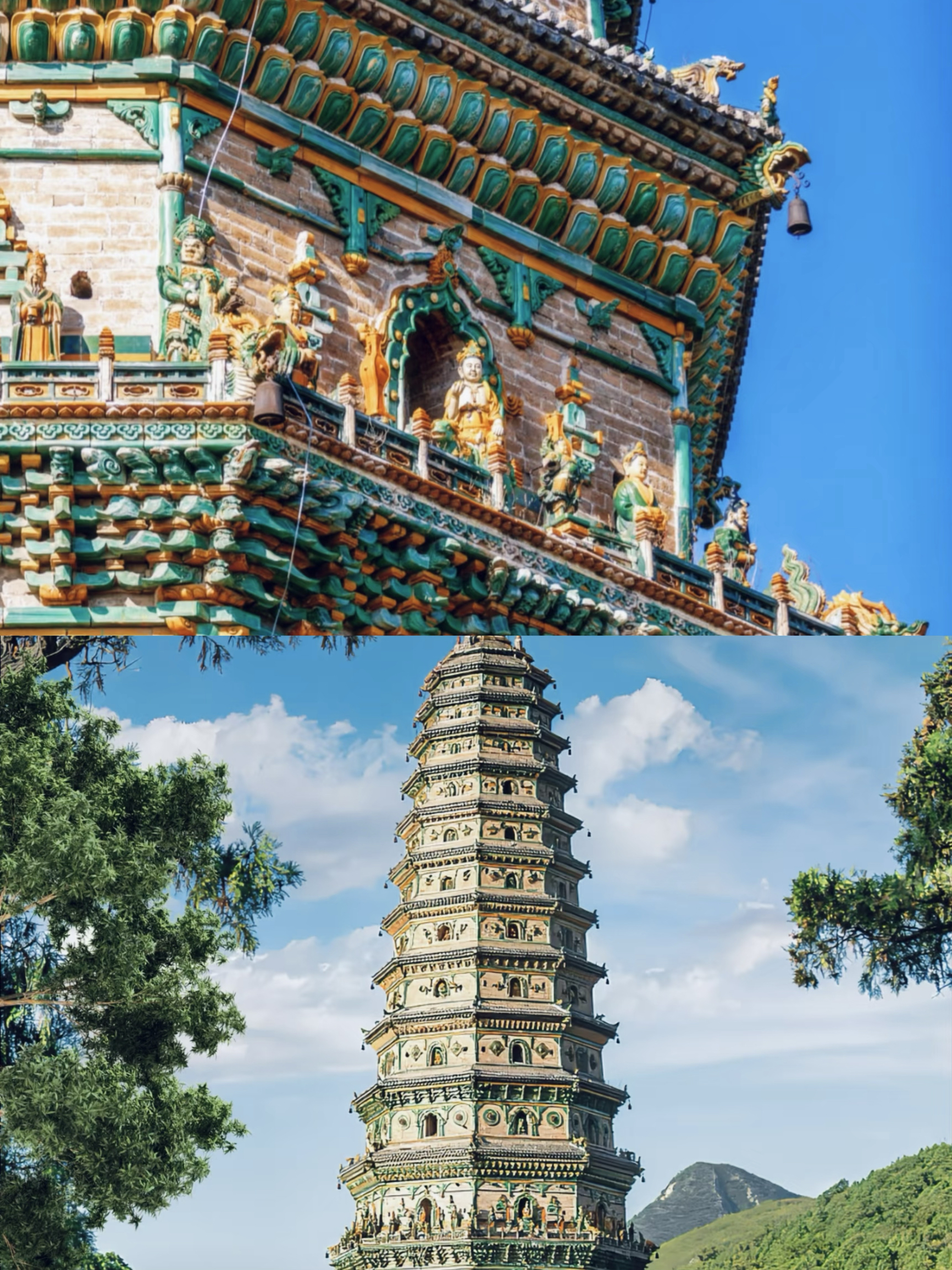
Feihong Pagoda.
The Rich History and Legends of Feihong Pagoda
A Glimpse into the History and Legends of Feihong Pagoda
Feihong Pagoda, or 飞虹塔, stands as a testament to the rich tapestry of Chinese history and culture, nestled within the scenic grounds of the Guangsheng Temple in Hongtong County, Shanxi Province. This exquisite structure not only captures the architectural brilliance of ancient China but also bears witness to the legends and stories that have been woven into its existence over centuries.
Historical Significance
The origins of Feihong Pagoda date back to the Ming Dynasty (1368-1644), although the site itself has been a place of worship since the Han Dynasty (206 BC – 220 AD). The pagoda is renowned for its intricate design and stunning turquoise tiles, which are emblematic of the craftsmanship of the era. It is often praised as one of the most beautifully preserved glazed pagodas in China.
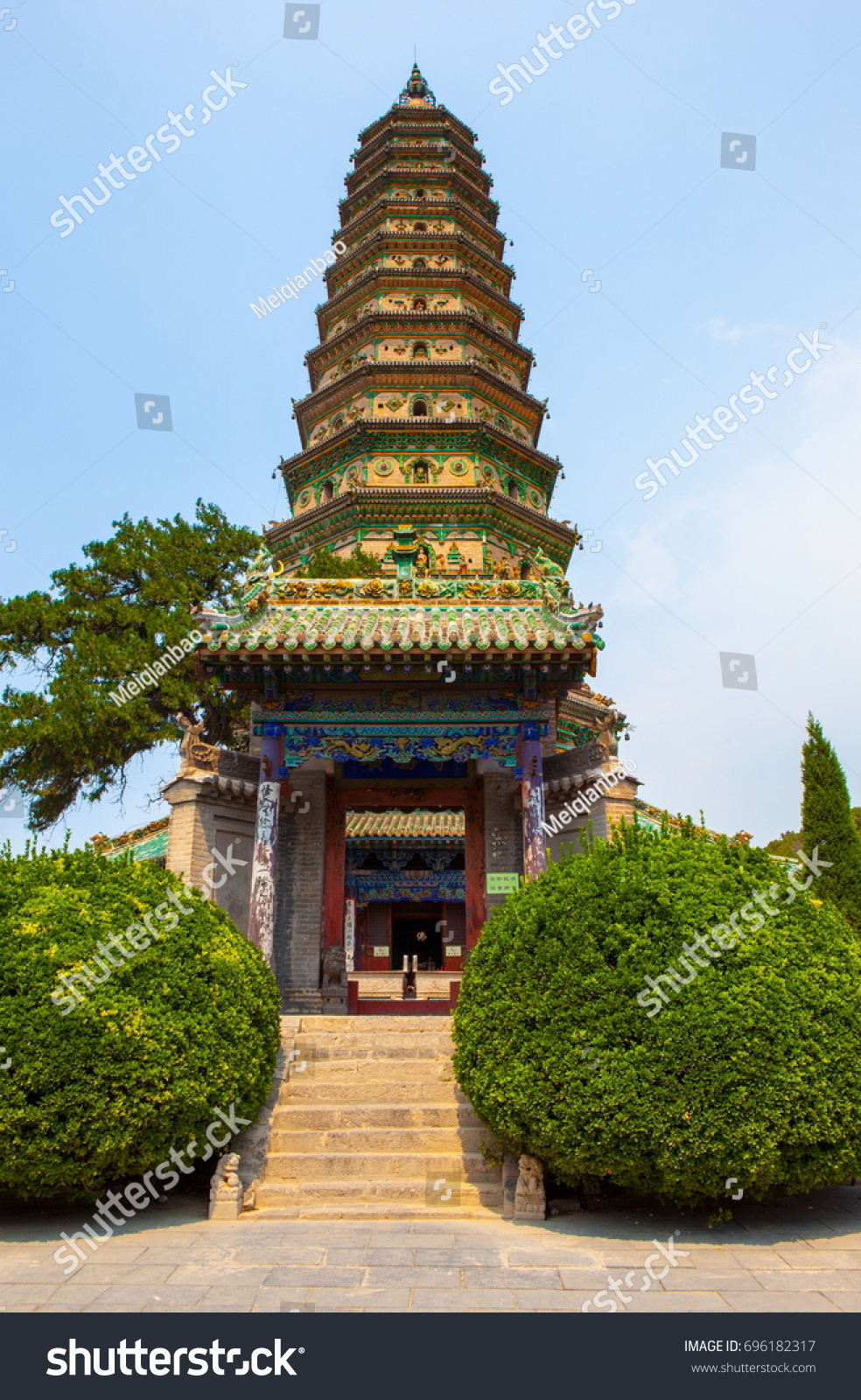
Feihong Pagoda.
Key Historical Highlights:
– Architectural Marvel: Feihong Pagoda is a unique example of the traditional Chinese pagoda style, characterized by its multi-tiered structure and ornate decorations. The use of glazed tiles reflects the artistic trends of the Ming era.
– Cultural Hubs: The pagoda, along with its surrounding temples, has served as a focal point for cultural and religious activities, contributing significantly to the spiritual landscape of the region.
Legends and Folklore
Feihong Pagoda is steeped in local folklore, much of which emphasizes its connection to Buddhist teachings and legendary figures. One of the most notable legends involves the famous monk Xuanzang, who is best known for his pilgrimage to India to retrieve sacred texts.
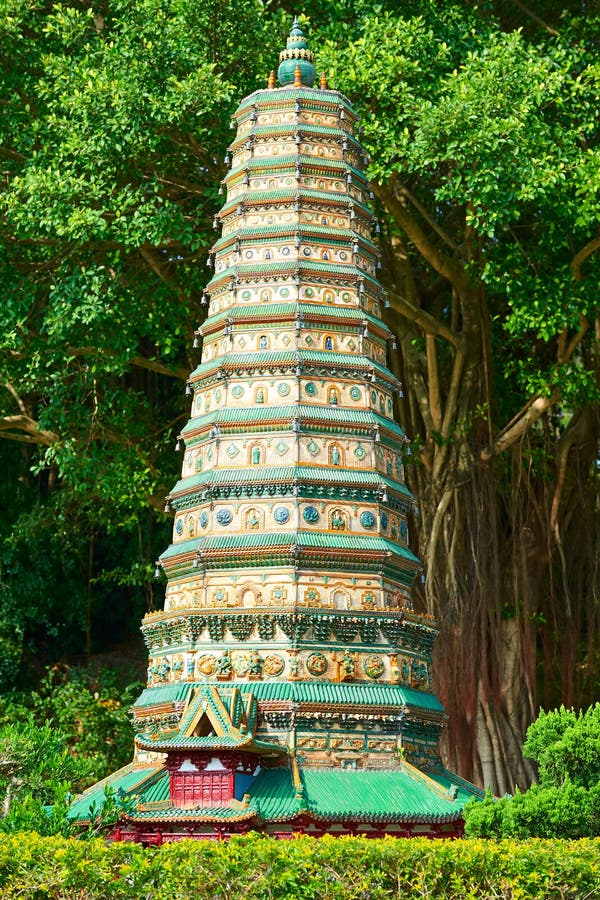
Feihong Pagoda.
Notable Legends:
– The Tale of Xuanzang: According to local lore, Feihong Pagoda served as a backdrop in the classic tale of Xuanzang’s journey, particularly in the iconic 1986 television adaptation of “Journey to the West.” In this story, the pagoda becomes a site where Xuanzang encounters various mythical creatures and challenges on his quest for enlightenment.
– Guardian Spirits: It is also said that the pagoda is protected by guardian spirits, who ensure that peace and harmony prevail in the area. Local residents often recount tales of miraculous events and divine interventions attributed to these spirits, fostering a deep reverence for the pagoda.
Visiting the Feihong Pagoda
For travelers wishing to immerse themselves in this historical and cultural marvel, visiting Feihong Pagoda offers a unique opportunity to explore not only the architectural grandeur but also the spiritual essence of this ancient site. The pagoda is part of the larger Guangsheng Temple complex, which includes multiple halls and shrines, each rich with history and artistry.

Feihong Pagoda.
- Accessibility: The pagoda is open to visitors daily from 8:00 AM to 5:30 PM, with an affordable entrance fee of 55 yuan.
- Exploration Tips: To fully appreciate the site, plan to spend at least two hours exploring both the upper and lower temple areas. The shuttle service available from the visitor center facilitates easy access between the different sections of the temple complex.
Conclusion
Feihong Pagoda is more than just an architectural landmark; it is a vibrant chapter in the story of Chinese history and mythology. Its legends continue to inspire awe and curiosity, making it a must-visit destination for anyone interested in the profound cultural heritage of China. As you stand before this magnificent structure, you can almost hear the whispers of the past, inviting you to uncover its secrets.
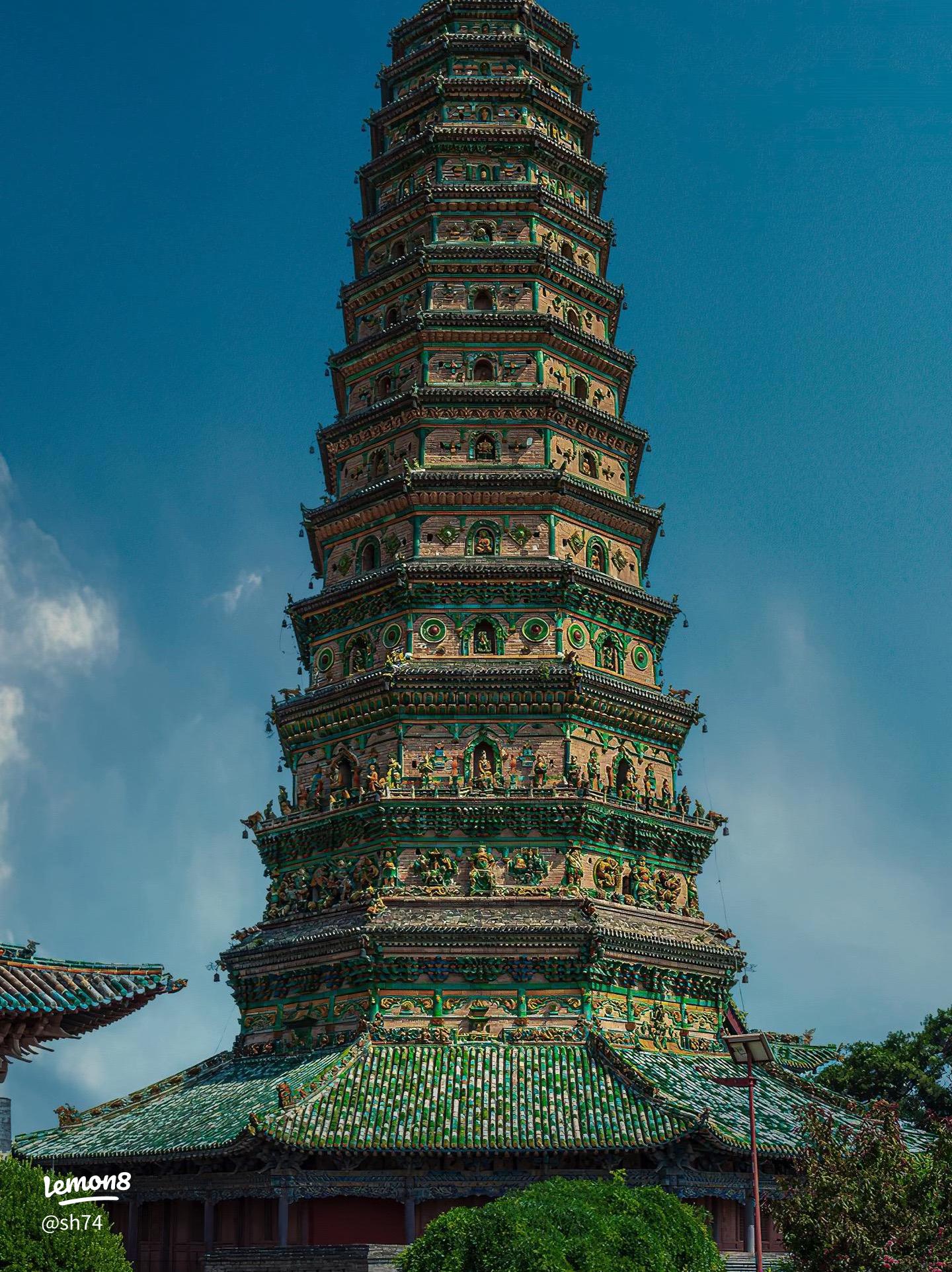
Feihong Pagoda.
Main Highlights: What You Absolutely Can’t Miss
When you visit the Feihong Pagoda, also known as the Flying Rainbow Pagoda, you are stepping into a treasure trove of history and architectural beauty that radiates the rich cultural heritage of China. Nestled within the scenic grounds of the Guangsheng Temple in Hongdong County, Shanxi Province, this pagoda is not just a standout landmark; it is a symbol of the region’s historical significance and religious devotion.
Architectural Marvel
The Feihong Pagoda is renowned for being one of the most exquisite and well-preserved glazed tile pagodas in China. Dating back to the Ming Dynasty, its intricate design features a striking array of colorful glazed tiles, which beautifully reflect the sunlight, giving it a vibrant appearance. The pagoda stands at an impressive height of 64 meters and consists of nine stories, each adorned with elaborate eaves and decorative elements that showcase the craftsmanship of the era.
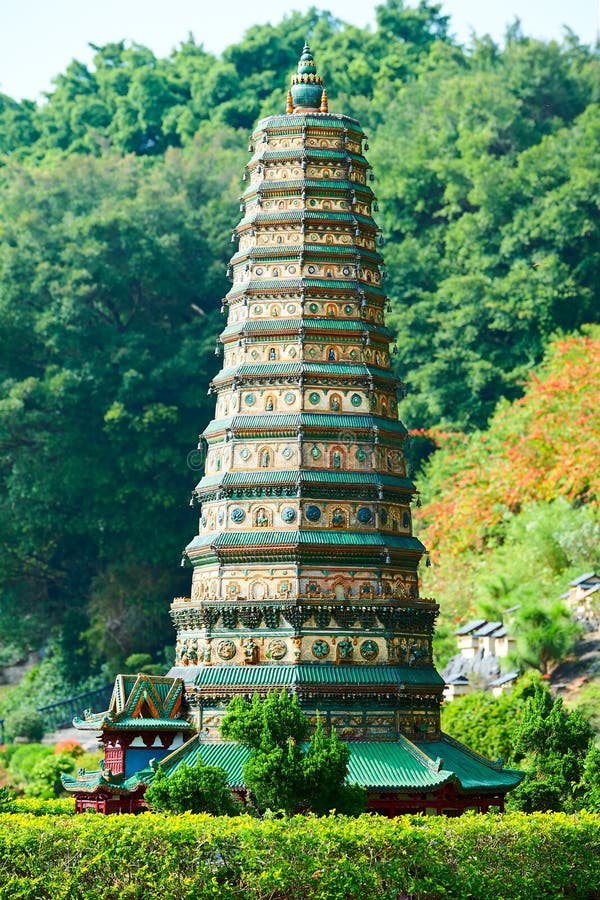
Feihong Pagoda.
Historical Significance
This pagoda is not merely an architectural feat; it holds a significant place in Chinese culture and history. It was constructed as a Buddhist monument, and its design embodies the spiritual aspirations of the time. The Feihong Pagoda also gained fame as a filming location for the classic 1986 television adaptation of Journey to the West, where it served as the backdrop for the memorable scene of the monk Tang Seng confronting the evil spirits.
Must-See Features
While exploring the Feihong Pagoda, don’t miss these highlights:
-
The Entrance Courtyard: Upon entering the Guangsheng Temple complex, take a moment to admire the serene courtyard that sets the tone for your visit. This tranquil space is surrounded by lush greenery and ancient trees.
-
The Pagoda’s Base: The base of the Feihong Pagoda features intricate carvings and inscriptions that tell stories of the past, offering insight into the cultural and religious significance of the structure.
-
The Views from the Top: Climbing to the top of the pagoda rewards you with breathtaking panoramic views of the surrounding landscape, providing an unforgettable experience and a perfect opportunity for photography.
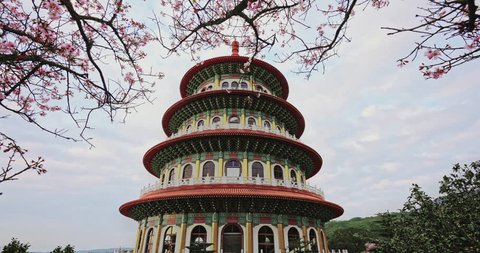
Feihong Pagoda.
Surrounding Attractions
In addition to the Feihong Pagoda, the Guangsheng Temple complex contains several other notable attractions:
-
Upper Temple (Shangsi): With its origins tracing back to the Han Dynasty, it showcases architecture that reflects the styles of the Ming Dynasty while retaining elements from the Yuan Dynasty.
-
Lower Temple (Xiasi): This part of the temple complex features structures from the Yuan Dynasty, including the Heavenly Kings Hall and the Great Buddha Hall, each rich in history and cultural significance.
Practical Information
-
Admission Fee: The entry fee is quite affordable at 55 CNY per person. A shuttle bus is available for 20 CNY, making it easy to navigate between the various temple sites.
-
Opening Hours: The temple complex is open daily from 08:00 to 17:30.
-
Getting There: While public transport is available, it is recommended to take a taxi directly to the Guangsheng Temple Visitor Center for convenience, as the nearest bus station is over 2 kilometers away.

Feihong Pagoda.
Visitor Tips
-
Time to Explore: Plan for about 2 hours to fully enjoy the pagoda and the surrounding temple complex without feeling rushed.
-
Dress Comfortably: Given the pagoda’s height and the need for climbing stairs, wear comfortable shoes for a pleasant visit.
-
Plan Your Route: A recommended route is to start from the Visitor Center, taking the shuttle to the Upper Temple, and then proceeding to the Lower Temple for a complete experience.
Visiting the Feihong Pagoda is more than just a trip; it’s a journey through time, offering a glimpse into China’s architectural brilliance and spiritual heritage. Make sure to include this magnificent site in your travel itinerary to truly appreciate the depth of Chinese culture and history.
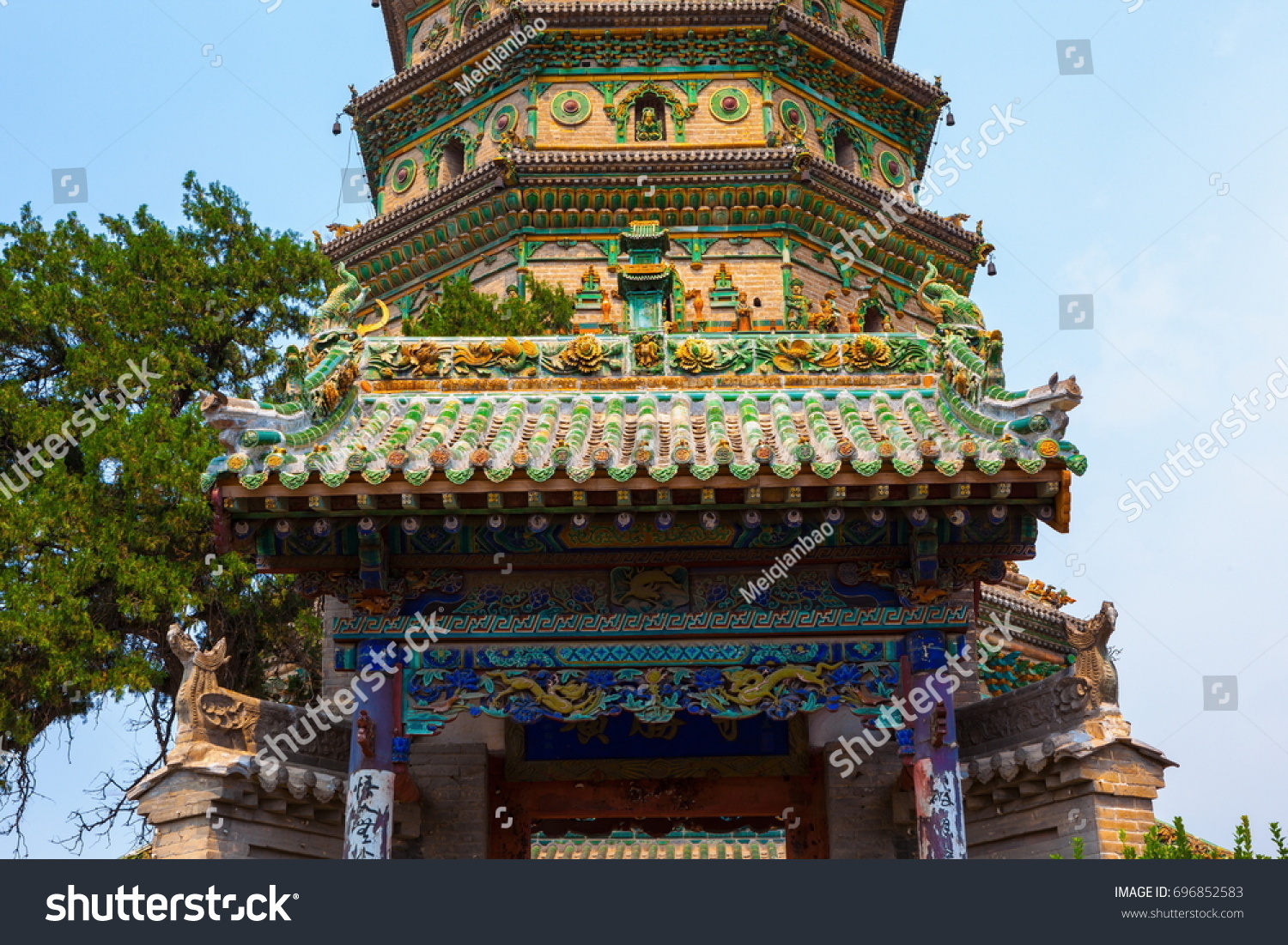
Feihong Pagoda.
Planning Your Visit: A Practical Guide
Your Essential Guide to Visiting Feihong Pagoda
Nestled in the scenic region of Shanxi Province, Feihong Pagoda (飞虹塔) stands as a testament to China’s rich historical tapestry and architectural prowess. This guide provides international travelers with all the necessary information to plan a memorable visit.
Getting There
Location: Feihong Pagoda is situated within the Guangsheng Temple complex in Hongdong County, Shanxi Province.

Feihong Pagoda.
Transportation:
– By Taxi: The most convenient method to reach the temple is by taxi, which can take you directly to the Guangsheng Temple Visitor Center. This is particularly recommended as public transport options may require a lengthy walk.
– By Bus: If you prefer public transport, be prepared for a 2-kilometer walk from the nearest bus stop to the Visitor Center.
Opening Hours and Admission
- Hours: The temple complex is open daily from 8:00 AM to 5:30 PM.
- Admission Fee: A modest entrance fee of 55 RMB per person grants access to the entire temple complex. If you’re planning to use the shuttle service within the temple grounds, it costs an additional 20 RMB.
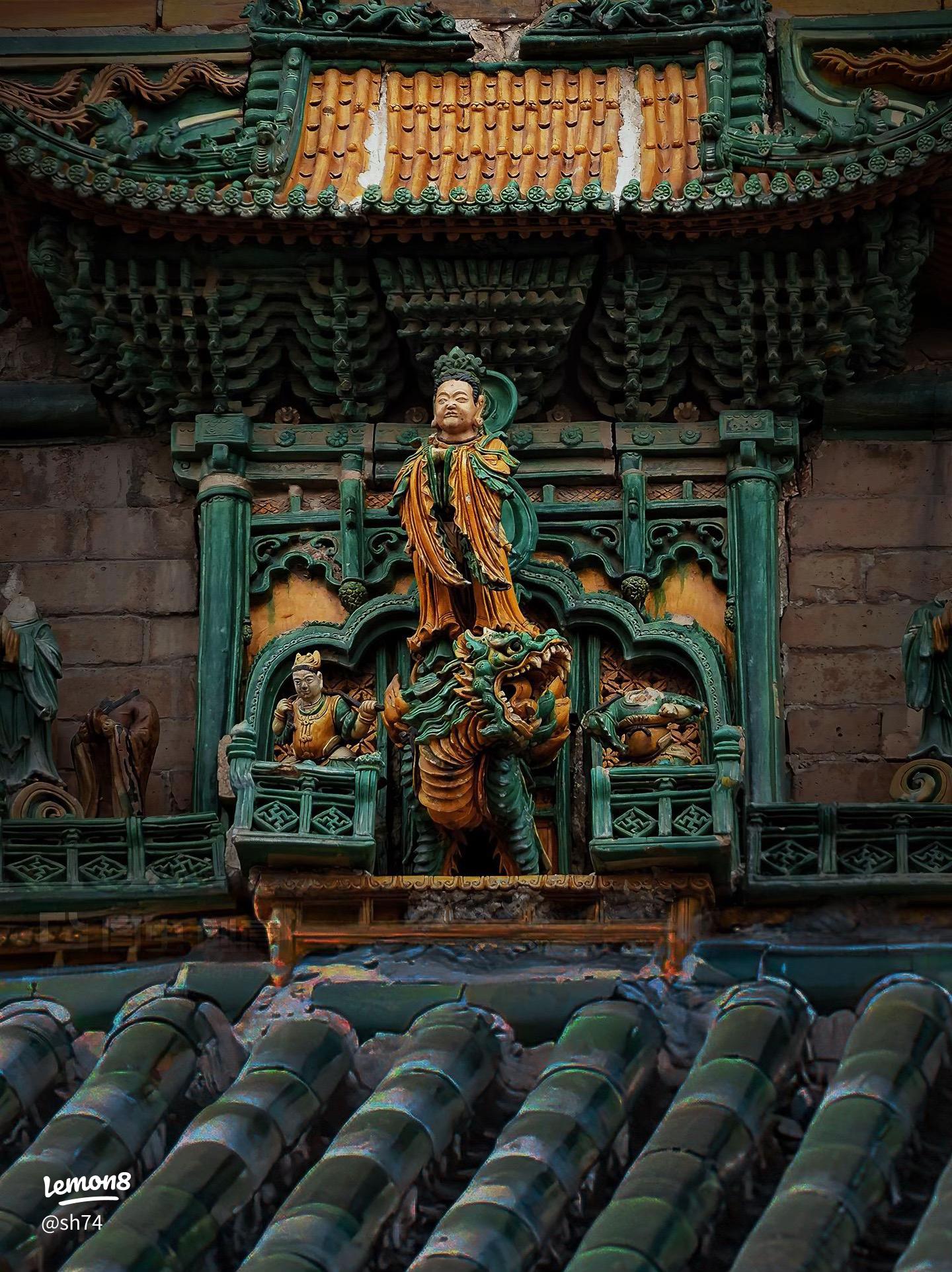
Feihong Pagoda.
Exploring the Temple Complex
The Guangsheng Temple consists of two main sections: the Upper Temple (上寺) and the Lower Temple (下寺). Here’s what you can expect:
Upper Temple Highlights:
- Maitreya Hall (弥陀殿): A serene space dedicated to Maitreya Buddha.
- Mahavira Hall (大雄宝殿): The central hall featuring beautiful statues and intricate decorations.
- Tianzhong Hall (天中天殿): A lesser-known gem showcasing unique architectural features.
- Feihong Pagoda: Renowned as one of the most exquisite and well-preserved glazed pagodas in China, this iconic structure gained fame for its appearance in the classic 1986 television series “Journey to the West.”
Lower Temple Highlights:
- Heavenly King Hall (天王殿): Featuring stunning artwork and statues.
- Daxiong Hall (大雄宝殿): Another significant hall with a rich history.
- The Ming Emperor King Hall (明应王殿) and Water God Temple (水神庙): Both reflect the temple’s diverse cultural and religious significance.
- The Grand Stage (元代大戏台): A relic of the Yuan Dynasty that adds to the historical depth of the visit.
Suggested Itinerary
To fully appreciate the grandeur of the temple complex, allocate approximately 2 hours for your visit. A recommended route is:
1. Arrive at the Visitor Center.
2. Take the shuttle to the Upper Temple.
3. Explore the Upper Temple and its highlights.
4. Continue to the Lower Temple via the shuttle.
Practical Tips
- Photography: Be sure to bring your camera; the intricate designs and lush surroundings are perfect for capturing unforgettable moments.
- Dress Code: As a place of worship, modest attire is advisable.
- Accessibility: The site is fairly walkable, but note that some areas may have uneven terrain.
Nearby Attractions
After visiting Feihong Pagoda, consider exploring other historical sites in the region, such as the ancient city of Pingyao or the mesmerizing Yungang Grottoes, both of which offer further insights into China’s rich cultural heritage.
Conclusion
Feihong Pagoda is not just a site of spiritual significance but also a window into China’s historical and architectural marvels. Whether you are a history enthusiast or simply seeking a peaceful retreat, this site promises an enriching experience. Make sure to prepare ahead, and enjoy your journey through the captivating tapestry of Chinese culture!
Tickets: Prices, Booking, and Tips
Visiting the Feihong Pagoda (飞虹塔) offers travelers a unique glimpse into China’s rich cultural heritage. To make the most of your experience, here is everything you need to know about ticket prices, booking options, and useful tips for your visit.
Ticket Prices
- Entrance Fee: The ticket to the Feihong Pagoda, located within the Guangsheng Temple complex, is quite reasonable at 55 CNY per person.
- Shuttle Bus Fee: To facilitate movement between the upper and lower temples, a shuttle bus service is available for 20 CNY per person.
Booking Information
- On-Site Purchase: Tickets can be purchased directly at the entrance of the temple complex. It is advisable to arrive early, especially during peak tourist seasons, to avoid long queues.
- Online Booking: Some travel websites may offer the option to book tickets in advance. This can save time and ensure you have a confirmed entry during busy periods.
Opening Hours
The Feihong Pagoda and the surrounding Guangsheng Temple are open daily from 08:00 AM to 05:30 PM. Plan your visit accordingly to make the most of your time exploring the historical sites.
Getting There
- Transportation: It’s recommended to take a taxi to the Guangsheng Temple visitor center, as public transportation options are limited and the nearest bus stop is over 2 kilometers away.
- Recommended Route: Upon arrival, take the shuttle bus from the visitor center to the upper temple, and then continue to the lower temple.
Essential Tips for Visitors
- Duration of Visit: Allocate approximately 2 hours to fully explore both the upper and lower temple areas, including the Feihong Pagoda.
- Navigation: Familiarize yourself with the layout of the temple complex before your visit. Maps are typically available at the visitor center.
- Public Transportation: If you plan to use public transport after your visit, the exit from the lower temple is conveniently close to a bus stop where you can catch bus No. 22 to the train station.
By following these guidelines, you’ll enhance your visit to the Feihong Pagoda, ensuring an enjoyable experience steeped in history and culture. Don’t miss the chance to admire one of the finest examples of glazed tile architecture in China while soaking in the tranquil atmosphere of this ancient site.
How to Get There: A Complete Transportation Guide
Reaching Feihong Pagoda: Your Transportation Guide
Nestled within the historical context of the Guansheng Temple in Hongtong County, Shanxi Province, the Feihong Pagoda (飞虹塔) is a site steeped in cultural significance and architectural beauty. Whether you’re a history buff, a cultural enthusiast, or simply seeking a peaceful retreat, getting to this remarkable pagoda is a journey worth undertaking. Here’s how to navigate your way there smoothly.
Getting to Hongtong County
By Air
The nearest major airport to Hongtong County is Taiyuan Wusu International Airport (TYN), located approximately 40 kilometers away. This airport offers domestic flights from major cities across China, as well as some international connections.
- Transportation from the Airport:
- Taxi: The most convenient option. Expect a fare of around ¥150 to ¥200, depending on your negotiation skills and traffic conditions.
- Private Transfers: Many hotels and travel agencies provide private car services that can be arranged in advance.
By Train
Hongtong has a train station that connects to larger hubs, such as Taiyuan and Datong. High-speed trains are available, which can significantly reduce travel time.
- From Taiyuan to Hongtong:
- Duration: Approximately 1 hour.
- Cost: Around ¥30 to ¥50 for a second-class seat.
Local Transportation to Feihong Pagoda
Once you arrive in Hongtong County, getting to Feihong Pagoda involves a short journey to the Guansheng Temple complex.
By Taxi
Taxis are readily available and provide a direct route to the Guansheng Temple visitor center, which is the starting point for your visit.
- Cost: Expect to pay around ¥30 to ¥50 for the trip from the train station or local hotels.
By Public Transportation
For those inclined to experience local life, buses are an option, but be prepared for a bit of a walk.
- Bus Route: Take the 22 bus from the nearest bus stop to the train station.
- Distance: The bus stop is about 2 kilometers from the visitor center.
- Cost: ¥2, but allow extra time for transfer and walking.
Shuttle Services
Once you arrive at the Guansheng Temple visitor center, take advantage of the shuttle service that operates within the temple grounds. This service connects the upper and lower temple complexes, including the Feihong Pagoda.
- Cost: Free for visitors, but you may need to show your entrance ticket.
- Timing: The shuttles run every 15 to 30 minutes, ensuring you can explore at your own pace.
Admission and Opening Hours
- Entrance Fee: ¥55 per person.
- Shuttle Fee: ¥20 per person (if applicable).
- Opening Hours: Daily from 08:00 AM to 05:30 PM.
Travel Tips
- Time Management: Allocate about 2 hours for your visit to fully appreciate the temple and the pagoda.
- Weather Considerations: Check the weather forecast before your visit, as some paths may be less accessible during rain.
- Local Delicacies: Consider trying local snacks available at the visitor center or nearby stalls for a complete cultural experience.
With this guide in hand, you’re well-equipped to embark on a meaningful journey to the Feihong Pagoda. Enjoy the tranquility and history that this sacred site has to offer!
Local Cuisine and Accommodation Nearby
Discovering Local Flavors and Comfortable Stays Near Feihong Pagoda
As you explore the historical marvels of Feihong Pagoda (飞虹塔) in Hongtong County, indulge in the unique tastes of Shanxi cuisine and find a cozy place to rest your head after a day of cultural immersion.
Local Cuisine
Shanxi is renowned for its rich culinary traditions, and a visit to the region wouldn’t be complete without sampling some local delicacies. Here are a few must-try dishes:
-
Dao Xiao Mian (刀削面): This hand-sliced noodle dish is a local favorite, known for its chewy texture and is typically served in a flavorful broth with various meat and vegetable toppings.
-
Pingyao Beef (平遥牛肉): Hailing from the nearby ancient city of Pingyao, this tender, marinated beef is often enjoyed as a snack or served with rice.
-
Sour Vinegar (山西老陈醋): A staple in Shanxi kitchens, this aged vinegar adds a distinctive tang to many dishes. Don’t miss the chance to taste it drizzled over noodles or used as a dipping sauce.
-
Qiao jiao (乔家大院): While visiting the Qiao Family Courtyard in nearby Qiao County, enjoy the local dishes at the family-run restaurants that focus on traditional recipes passed down through generations.
For a truly authentic dining experience, consider visiting local eateries near the pagoda, where you can enjoy these dishes in a warm and welcoming atmosphere.
Accommodation Options
After a day of historical exploration, you’ll want a comfortable place to unwind. Here are some recommended accommodations near Feihong Pagoda:
-
Hongtong Hotel (洪洞宾馆): Just a short drive from the pagoda, this hotel offers modern amenities and spacious rooms, making it a great choice for families and solo travelers alike. The hotel also features a restaurant serving local dishes.
-
Feihong Inn (飞虹客栈): A charming guesthouse located within walking distance of the pagoda, Feihong Inn provides a cozy atmosphere with traditional decor. Guests can enjoy a peaceful stay while being close to the cultural sites.
-
Shanxi Grand Hotel (山西大酒店): For those seeking a more luxurious experience, this hotel offers top-notch service and facilities. Located approximately 30 minutes from the pagoda, it provides a serene retreat with beautiful gardens and fine dining options.
-
Local Homestays: For a more personalized experience, consider booking a local homestay. Engaging with your hosts can provide insights into the region’s culture and cuisine, making your stay even more memorable.
Final Thoughts
Whether you’re savoring the delights of Shanxi cuisine or relaxing in one of the local accommodations, your visit to Feihong Pagoda will be enriched by the flavors and hospitality of this historical region. Enjoy your journey through time and taste!
Frequently Asked Questions
Frequently Asked Questions about Feihong Pagoda (飞虹塔)
1. What is Feihong Pagoda, and why is it significant?
Feihong Pagoda, located within the Guangsheng Temple complex in Hongtong County, Shanxi Province, is renowned for being one of the most exquisite and well-preserved glazed pagodas in China. Built during the Ming Dynasty, it showcases architectural elements that reflect the grandeur of ancient Chinese craftsmanship. Additionally, it gained fame as a filming location for the 1986 version of “Journey to the West,” particularly in scenes featuring the monk Tang Seng.
2. What are the operating hours and ticket prices for Feihong Pagoda?
Feihong Pagoda and the surrounding Guangsheng Temple complex are open daily from 8:00 AM to 5:30 PM. Admission is quite affordable, with ticket prices set at 55 RMB per person. Shuttle services within the temple grounds are also available for 20 RMB per person.
3. How can I get to Feihong Pagoda?
To reach Feihong Pagoda, it is recommended to take a taxi to the Guangsheng Temple Visitor Center, as the nearest bus stop is over 2 kilometers away. Once there, visitors can easily board a shuttle bus that will take them to both the upper and lower temple areas, including the pagoda.
4. What should I expect to see at the temple complex?
The Guangsheng Temple complex is divided into two sections: the Upper Temple and the Lower Temple. Key highlights include:
– Upper Temple: Amitabha Hall, Mahavira Hall, and Tiangong Hall.
– Lower Temple: Heavenly King Hall, Mahavira Hall, and a unique Yuan Dynasty opera stage.
Feihong Pagoda itself stands out with its intricate glazed tiles and towering structure, making it a must-see.
5. How much time should I allocate for visiting the pagoda and temple complex?
Visitors should plan to spend approximately 2 hours exploring the entire Guangsheng Temple complex, allowing enough time to appreciate the architecture, history, and serene surroundings.
6. Are there any tips for visiting Feihong Pagoda?
- Wear Comfortable Shoes: The temple grounds involve some walking, so comfortable footwear is advisable.
- Check the Weather: Since much of the visit is outdoors, checking the weather forecast will help you dress appropriately.
- Use the Shuttle Service: To save time and energy, utilize the shuttle buses provided within the temple area.
7. Is Feihong Pagoda suitable for children and elderly visitors?
Yes, Feihong Pagoda is generally accessible for families with children and elderly visitors. However, it’s advisable to monitor their comfort level during the walk around the temple complex, as some areas may involve stairs or uneven paths.
8. Can I take photographs at Feihong Pagoda?
Absolutely! Photography is encouraged, as the stunning architecture and picturesque scenery provide excellent opportunities for memorable shots. Just be respectful of any signs indicating restricted areas, especially within the worship spaces.
Final Thoughts on Your Trip
As your journey through the rich tapestry of history and culture at Feihong Pagoda draws to a close, take a moment to reflect on the myriad experiences that have shaped your visit. This remarkable site, nestled within the ancient grounds of Guangsheng Temple, is not just a visual feast; it is a portal into the past, offering a glimpse into the architectural brilliance of the Ming and Yuan Dynasties.
Embrace the Memories
- Cultural Significance: The Feihong Pagoda stands as a testament to the artistry and ingenuity of its time. Its exquisite design and historical relevance make it a must-visit for anyone eager to understand China’s cultural heritage.
- Historical Insights: Each corner of the pagoda and temple complex whispers stories of the past, from the legends of the Tang Dynasty to the cinematic echoes of the 1986 adaptation of Journey to the West. These narratives enrich your experience, connecting you to generations that walked these paths before you.
- Serenity and Reflection: As you wander through the tranquil surroundings of Guangsheng Temple, take a moment to pause and reflect. The serene atmosphere invites contemplation, allowing you to absorb the beauty and significance of the place.
Practical Takeaways
- Accessibility: The affordability of entry and convenient transportation options make this historical treasure accessible to all. With a modest entrance fee, your exploration of history is well within reach.
- Time Well Spent: Two hours is all you need to immerse yourself in the captivating stories and architectural wonders, ensuring your visit is both fulfilling and manageable.
A Journey Worth Taking
In conclusion, visiting Feihong Pagoda is not merely a sightseeing excursion; it is a journey through time that enriches your understanding of Chinese history and culture. As you depart, carry with you the stories, sights, and serenity of this sacred place, and let them inspire your future travels. Whether it’s the allure of ancient architecture or the whispers of history that call to you, Feihong Pagoda is a destination that promises to leave an indelible mark on your heart. Safe travels and may your adventures continue to foster a deeper connection with the world around you!